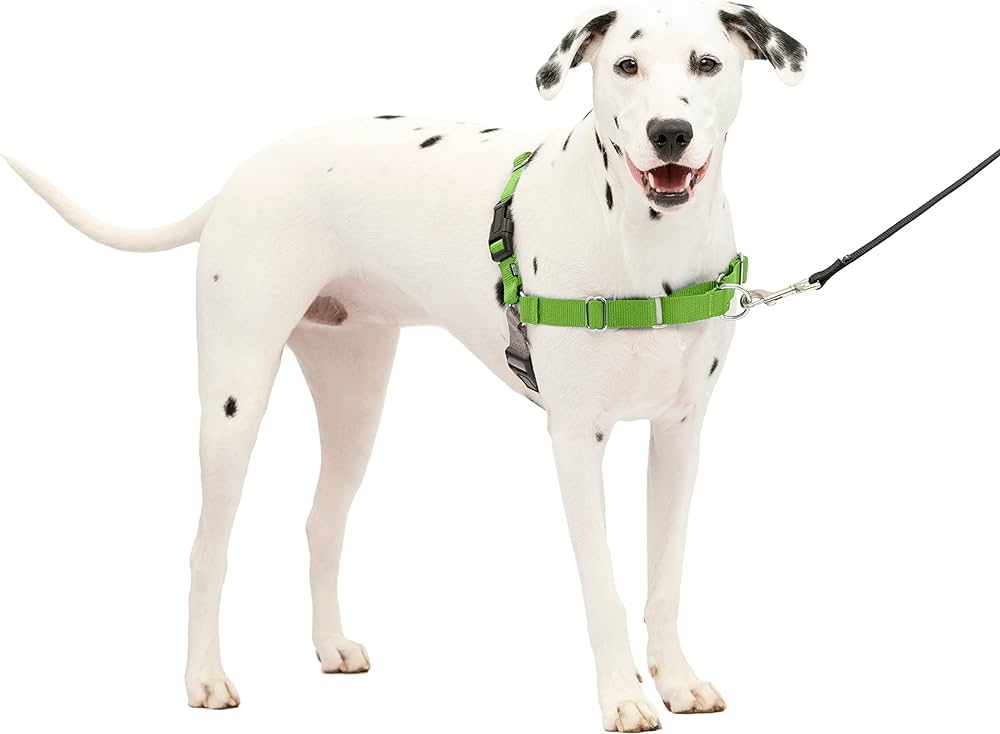
How To Pick a Harness for Your
Dog’s Walking Style
Choosing the right harness for your dog is essential for a safe and comfortable walking experience. With so many options available, it’s crucial to consider your dog’s walking style, size, and any special requirements. In this guide, we’ll explore different types of dog harnesses, the best harnesses for various situations and dog types, and our criteria for selecting the right one.
Understanding Your Dog’s Walking Style
Before diving into the world of harnesses, it’s essential to understand your dog’s walking style. Here are a few common walking styles and the harnesses that work best for each:
1.) The Puller
If your dog tends to pull on the leash during walks, you’ll want a harness that discourages this behavior. No-pull or front-clip harnesses are excellent options. They redirect your dog’s forward motion, making it uncomfortable to pull.
2.) The Well-Behaved Walker
For dogs that walk nicely on a leash without pulling, a standard back-clip harness can be a comfortable choice. It provides a secure fit without restricting movement.
3.) The Escape Artist
Some dogs have a knack for wiggling out of their harnesses. Look for an escape-proof harness with multiple adjustment points and secure buckles to prevent Houdini-like escapes.
4.) The Adventure Seeker
Active dogs that love outdoor adventures require a durable and comfortable harness. Consider a hiking harness with added padding and secure attachment points for accessories like water bottles and ID tags.
Different Types of Dog Harnesses
There are various types of dog harnesses available, each designed for specific needs:
1.) Back-Clip Harness
These harnesses have a leash attachment on the dog’s back. They’re great for well-behaved dogs and small breeds.
2.) Front-Clip Harness
Front-clip harnesses have a leash attachment on the dog’s chest. They help prevent pulling and encourage walking beside you.
3.) No-Pull Harness
No-pull harnesses come in different styles, including front-clip and head halters. They discourage pulling and redirect your dog’s movement.
4.) Step-In Harness
These harnesses are easy to put on your dog. They are suitable for dogs who don’t like things going over their heads.
5.) Vest Harness
Vest harnesses offer additional support and comfort. They are excellent for active dogs or those with mobility issues.
The Best Harnesses for Different Situations and Dog Types
Choosing the right harness also depends on your dog’s size, breed, and specific situations:
1.) Small Breeds
For small dogs, step-in harnesses are convenient. They’re easy to put on and provide a secure fit.
2.) Large Breeds
Larger dogs may benefit from no-pull or vest harnesses. These provide better control and support for bigger frames.
3.) Active Dogs
Active dogs, like Huskies or Retrievers, benefit from sturdy hiking harnesses with reinforced attachment points.
4.) Senior or Injured Dogs
Dogs with mobility issues or injuries require vest harnesses that provide extra support.
5.) Escape-Prone Dogs
For escape artists, harnesses with multiple adjustment points and secure buckles are essential.
How We Chose
When selecting the best harness for your dog, it’s important to consider factors like comfort, safety, durability, and your dog’s specific needs. We researched and tested various harnesses, considering these criteria, and read customer reviews to ensure real-world satisfaction. Our recommendations are based on both expert opinions and user experiences.
Choosing the right harness for your dog’s walking style is a decision that impacts both your dog’s comfort and your control during walks. By understanding your dog’s behavior, size, and specific needs, you can select the perfect harness. Remember, a happy and comfortable dog makes for enjoyable walks for both of you.
For more information about how we can assist you with pet care, please visit our Crate Escape Atlanta website.
Your pets’ happiness and your peace of mind are our top priorities.
Frequently Asked Questions
Use a soft measuring tape to measure the circumference of your dog’s chest, just behind their front legs. Refer to the manufacturer’s sizing guide for the specific harness.
It’s not recommended to keep a harness on 24/7. Give your dog breaks to prevent any skin issues or discomfort.
Front-clip harnesses are generally more effective at discouraging pulling by redirecting the dog’s motion.
While breed can be a factor, it’s more important to consider your dog’s individual size and behavior.
Some harnesses have built-in ID tag pockets, but it’s still advisable to have a collar with tags for identification.
Most harnesses are machine washable. Refer to the manufacturer’s care instructions for specific guidance.